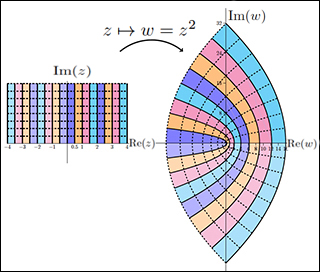Here’s a persuasive advertisement for ghostwriting services for the topic of Cauchy’s Theorem:
**Unlock the Secrets of Complex Analysis with Our Expert Ghostwriting Services**
Are you struggling to grasp the intricacies of Cauchy’s Theorem and its application to complex curves? Do you find yourself lost in the world of holomorphic functions and integrals?
Look no further! Our team of expert ghostwriters specializes in crafting high-quality, tailored solutions for complex analysis assignments, including Cauchy’s Theorem. With our services, you can:
✦ Get a deep understanding of Cauchy’s Theorem and its applications to complex curves, including γ, γ₀, -γ̃, and -γ₀
✦ Receive expertly written solutions that demonstrate a clear and concise approach to evaluating the integral of a holomorphic function
✦ Enjoy personalized support and guidance from our team of experienced mathematicians and writers
Our ghostwriting services offer:
✦ Plagiarism-free, original content that meets the highest academic standards
✦ Timely delivery to meet your tight deadlines
✦ Unlimited revisions to ensure your complete satisfaction
✦ Confidentiality and discretion guaranteed
Don’t let complex analysis hold you back. Let our expert ghostwriters help you unlock the secrets of Cauchy’s Theorem and achieve academic success. Order now and get the grades you deserve!
We get a new curve consisting of \(\gamma\), then \(\gamma_{0}\), then \(-\widetilde{\gamma}\), and then \(-\gamma_{0}\) in that order. The inside of the curve is the shaded region. In this region, \(f\) is holomorphic so we can apply Cauchy’s Theorem:
\[\int\limits_{\gamma+\gamma_{0}-\widetilde{\gamma}-\gamma_{0}}f=0. \tag{3.3} \]\]
Strictly speaking this curve is not a simple closed curve, but such an objection can be taken care of by drawing two parallel copies of \(\gamma_{0}\) and taking the limit as these copies converge together. From (3.3) we get
Figure 3.32: Preliminary version of the deformation theorem
\[\int_{\gamma}f+\int_{\gamma_{0}}f-\int_{\widetilde{\gamma}}f-\int_{\gamma_{0}}f=0 \implies\int_{\gamma}f=\int_{\widetilde{\gamma}}f\]
as desired.
### Extension of Deformation Theorem
Suppose that \(\gamma_{1},\gamma_{2},\ldots,\gamma_{n}\) are simply closed curves and that \(\gamma\) is a simple closed curve with \(f\) holomorphic on the region between \(\gamma\) and \(\gamma_{1},\ldots,\gamma_{n}\). Then
\[\int_{\gamma}f=\sum_{k=1}^{n}\;\int_{\gamma_{k}}f.\]
Proof
: Draw curves \(\widetilde{\gamma}_{1},\widetilde{\gamma}_{2},\ldots,\widetilde{\gamma}_{n}\) joining \(\gamma\) to \(\gamma_{1},\ldots,\gamma_{n}\), respectively, as shown in Figure 3.33.
Let \(\rho\) be the curve obtained by joining paths \(\gamma,-\widetilde{\gamma}_{1},-\gamma_{1},\widetilde{\gamma}_{1}\), \(\ldots\;,-\widetilde{\gamma}_{n}\), \(-\gamma_{n},\widetilde{\gamma}_{n}\) Since \(f\) is holomorphic inside \(\rho\),
\[\int_{\rho}f=0.\]
But \(\rho\) consists of \(\gamma,-\gamma_{1},-\gamma_{2},\ldots,-\gamma_{n}\) and each \(\widetilde{\gamma}_{i}\) traversed in opposite directions, so the contributions from this last portion cancel. Thus
\[0=\int_{\gamma}f+\int_{-\gamma_{1}}f+\cdots+\int_{-\gamma_{n}}f=\int_{\gamma }f-\sum_{i=1}^{n}\int_{\gamma_{i}}f\]
as required.
**Example 107**.: Suppose we denote the integral of \(f\) by \(I=\int\limits_{\gamma}f(z)dz\), where \(\gamma(t)=e^{it}\) for \(0\leq t\leq 2\pi\) (the unit circle). For all of the following functions, we can show that \(I=0\).
Figure 3.33: Extension of deformation theorem for \(n=3\)
* Let \(f(z)=\dfrac{e^{iz^{2}}}{4+z^{2}}\). This function is holomorphic except at \(\pm 2i\), but these points are outside \(\gamma(t)\). By Cauchy’s Theorem, \(I=0\).
* Let \(f(z)=(\text{Im}z)^{2}\). Note that \(f(z)\) is not differentiable anywhere (use the Cauchy Riemann equations to show this). Thus we cannot apply Cauchy’s Theorem. However, we can use the parametrization \[\int_{\gamma}f(z)dz=\int_{\gamma}f(\gamma(t))\cdot\gamma^{\prime}(t)dt,\] which results in \[I=\int_{0}^{2\pi}(\sin t)^{2}ie^{it}dt=\int_{0}^{2\pi}(2\sin t \cos t)i(\cos t+i\sin t)dt\] \[=2i\int_{0}^{2\pi}\sin t\cos^{2}tdt-2\int_{0}^{2\pi}\sin^{2}t\cos tdt=0.\]
* Let \(f(z)=\dfrac{1}{2z-1}-\dfrac{1}{2z+1}\). Observe that \(f\) is not holomorphic at \(z=\dfrac{1}{2}\) and \(z=-\dfrac{1}{2}\) and both are contained in \(\gamma(t)\), so we cannot use Cauchy’s Theorem. In addition, the Fundamental Theorem of Calculus is not applicable. Can you think of a function \(F(z)\) such that \(F^{\prime}(z)=f(z)\) in this region? But we can use the deformation theorem. Consider the following Figure 3.34. \[\begin{array}{c}\includegraphics[width=142.26378pt]{figure-1.png}\\ \includegraphics[width=142.26378pt]{figure-1.
\[\begin{split}\text{Let}\quad\gamma_{1}(t)=\gamma\left(\frac{1}{2}; \frac{1}{4}\right)&=\frac{1}{2}+\frac{1}{4}e^{it}\quad 0\leq t\leq 2\pi \quad\text{and}\\ \gamma_{2}(t)=\gamma\left(-\frac{1}{2};\frac{1}{4}\right)& =-\frac{1}{2}+\frac{1}{4}e^{it}\quad 0\leq t\leq 2\pi.\end{split}\]
Let \(\gamma_{0}\) be the straight line joining \(\frac{1}{2}\) to \(-\frac{1}{2}\). In addition, let \(\widetilde{\gamma}:\gamma_{1}+\gamma_{0}+\gamma_{2}-\gamma_{0}\). Then by the deformation theorem
\[\int\limits_{\gamma}f(z)dz=\int\limits_{\widetilde{\gamma}}f(z)dz=\int \limits_{\gamma_{1}}f(z)dz+\int\limits_{\gamma_{2}}f(z)dz.\]
Using the above parametrization, we get that
\[\begin{split}\int\limits_{\gamma}f(z)dz&=\int \limits_{\gamma_{1}}\left(\frac{1}{2z-1}-\frac{1}{2z+1}\right)dz+\int\limits_{ \gamma_{2}}\left(\frac{1}{2z-1}-\frac{1}{2z+1}\right)dz\\ &\qquad=\int\limits_{\gamma_{1}}\frac{1}{2z-1}dz+\int\limits_{ \gamma_{2}}\frac{1}{2z+1}dz=2\pi i\cdot\frac{1}{2}-2\pi i\cdot\frac{1}{2}=0. \end{split}\]
### Logarithms Again
Next we claim that there does not exist a holomorphic function \(F\) defined on \(\mathbb{C}\setminus\{0\}\) such that \(F^{\prime}(z)=\frac{1}{z}\). If such an \(F\) existed, then using the Fundamental Theorem of Calculus, we could conclude that
\[\int\limits_{\gamma}\frac{1}{z}dz=0,\]
where \(\gamma\) is a unit circle. However, we know that
\[\int\limits_{\gamma}\frac{1}{z}dz=\int_{0}^{2\pi}\frac{ie^{it}}{e^{it}}dt=2\pi i.\]
Therefore no such \(F\) can exist. Although \(\frac{d}{dz}(\log z)=\frac{1}{z}\), it does not contradict this example because \(\log z\) is not holomorphic on \(\mathbb{C}\setminus\{0\}\). It is holomorphic only on \(\mathbb{C}\) minus the negative \(x\)-axis (including the origin) (Figure 3.35).
Recall that \(\log z:\mathbb{C}\setminus\{0\}\to\mathbb{C}\) is an inverse of \(e^{z}\) when \(e^{z}\) is restricted to the period strip \(\{x+iy:y_{0}\leq y\leq y_{0}+2\pi\}\). However, for differentiability of \(\log z\) we must restrict \(\log z\) to a set that is smaller than \(\mathbb{C}\setminus\{0\}\). The reason is simple:
\[\log z=\log|z|+i\arg z,\quad\text{for say }0\leq\arg z\leq 2\pi.\]
But \(\arg z\) is discontinuous. It jumps by \(2\pi\) as we cross the real axis. If we remove the real axis, then we are excluding the usual positive reals on which we want \(\log z\) defined. Therefore it is convenient to use the branch \(-\pi<\arg z\leq\pi\) and an appropriate set on which \(\log z\) is holomorphic.
**Proposition 43**.: _Let \(G\) be an open set that is given by_
\[G=\mathbb{C}\setminus\{x+iy:x\leq 0\text{ and }y=0\}.\]
_Define a branch of \(\log z\) on \(G\) by_
\[\log z=\log|z|+i\arg z\quad-\pi<\arg z\leq\pi,\]
_which is called the principal branch of the logarithm. Then \(\log z\) is holomorphic on \(G\) and \(\frac{d}{dz}\log z=\frac{1}{z}\). Similar statements holds true for other branches as well._
The next example shows how Cauchy’s theorem can be used to solve real indefinite integrals.
**Example** We can use Cauchy’s Theorem to show that
\[\int_{0}^{\infty}\frac{\sin^{2}x}{x}dx=\frac{\pi}{4}.\]
Figure 3.35: Cutting the negative \(x\)-axis including \(0\)
We accomplish this by integrating \(\dfrac{e^{iz^{2}}}{z}\) along the boundary of \(r\leq|z|\leq R\) where \(0\leq\arg z\leq\pi/2\). Let \(\gamma\) be the path obtained by joining \([r,R]\) to \(\gamma_{1}\) to \(-i[r,R]\) to \(-\gamma_{2}\) (Figure 3.36). By Cauchy’s Theorem,
\[\int\limits_{\gamma}\dfrac{e^{iz^{2}}}{z}dz=0.\]
However, based on our construction of \(\gamma\), we also have that
\[\int\limits_{\gamma}\dfrac{e^{iz^{2}}}{z}dz=\int\limits_{[r,R]}\dfrac{e^{iz^{ 2}}}{z}dz+\int\limits_{\gamma_{1}}\dfrac{e^{iz^{2}}}{z}dz+\int\limits_{-i[r,R] }\dfrac{e^{iz^{2}}}{z}dz+\int\limits_{-\gamma_{2}}\dfrac{e^{iz^{2}}}{z}dz=0. \tag{3.4} \]\]
We need to find all four integrals by considering the parametrization of each path.
**Integral along \([r,R]\)**: If we write \(z=x+iy\), then along \([r,R]\) we have that \(y=0\) so that \(z=x\). Therefore,
\[\int\limits_{[r,R]}\dfrac{e^{iz^{2}}}{z}dz=\int_{r}^{R}\dfrac{e^{ix^{2}}}{x}dx.\]
**Integral along \(\gamma_{1}\)**: On \(\gamma_{1}\), \(z=\gamma_{1}(\theta)=Re^{i\theta}\). Therefore
\[dz=Rie^{i\theta}d\theta,\quad e^{z^{2}}=e^{(Re^{i\theta})^{2}}.\]Thus we have that

发表回复